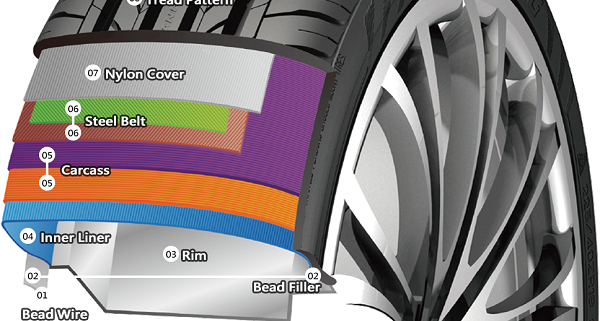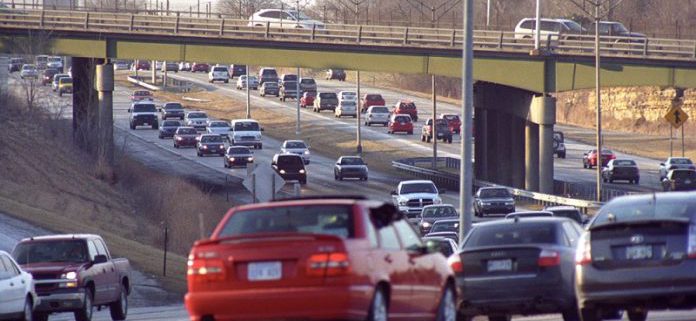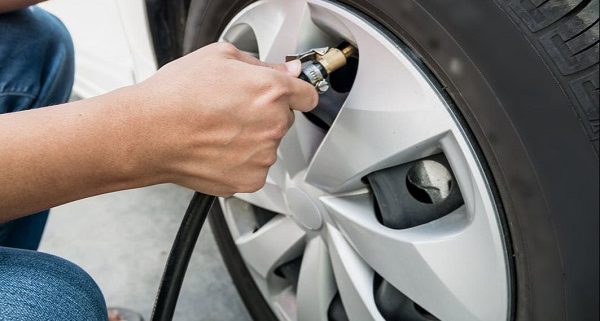Regularly check your tire pressure and inspect your tire tread and sidewalls
In addition to maintaining proper inflation pressure, regularly inspect the tire tread and sidewalls for irregular tread wear, cracking, scrapes, bulges, cuts, snags, foreign objects or other damage resulting from use. Remove any stones, glass, foreign objects, etc. embedded in the tread to prevent further damage. Even minor damage can lead to further injury and eventual tire failure. Tires with excessive cracking on the tread or sidewall(s) should be removed from service. This is typically caused by under inflation, over loading, improper storage, and/or improper long-term parking.
Consumers should check their tire tread and sidewall areas during monthly inflation pressure checks, looking for uneven or irregular tread wear or other conditions as noted above. It is recommended that tires, including the spare, be periodically inspected by a tire service professional during routine maintenance intervals such as oil changes and tire rotations.
WHEN INSPECTING YOUR TIRES, LOOK FOR:
Uneven tread wear – This can include more wear on one tread edge than the other, a rippled pattern of high and low wear, or exposed steel wire. Uneven wear can be caused by problems such as under inflation, vehicle misalignment and improper balancing.
Shallow tread – Well worn or bald tires can result in hydroplaning, loss of traction and are more likely to be damaged by potholes and other road hazards. Replace tires when worn to 2/32 inch (1.6 mm) tread depth anywhere on the tread face. To help you see when the tread is worn out, tires have a built in “tread wear indicators.” These are narrow bars of smooth rubber that run across the tread. When the tread is even with the bars, a tire is worn down to 2/32 inch and the tire must be replaced immediately. You can also try the penny test: place a penny in the tire’s most worn groove with Lincoln’s head facing down. If you can see the top of Lincoln’s head, the tire should be replaced.
Troublemakers – Check for small stones, pieces of glass, bits of metal and other foreign objects that might be wedged into the tread and carefully remove them. They can cause serious problems if they are pushed farther into your tire as you drive.
Damaged areas – Cracks, cuts, splits, punctures, holes and bulges in the tread or on the sidewalls of the tire can indicate serious problems, and the tire may need to be replaced.
Slow leaks – Remember that tires lose inflation pressure when the air temperature gets colder (about 1 psi or 7 kPa for every 10°F drop in temperature). Tires may also lose a certain amount of inflation pressure due to their permeability (about 2 psi or 14 kPa per month). However, if you find that you have to add inflation pressure every few days, have the tire, wheel and valve checked by a tire service professional – and if necessary, repair or replace the tire.
Valve caps – Those little caps on your tire’s valve stem keep moisture and dirt out, so make sure they are on all your tires. Also, when you have a tire replaced, have a new valve stem assembly installed at the same time.
Driving on a damaged tire can be dangerous. If you see something you’re not sure about during your inspection, have it examined by your tire service professional. Any time you see damage to a tire, don’t drive on it – use a spare if you need to go somewhere. And finally, pay attention to the “feel” of your tires as you drive. A rough ride may indicate tire damage or excessive wear.
If you notice vibrations or other disturbances while driving, and/or you suspect possible damage to your tire or vehicle, immediately reduce speed, drive with caution until you can safely pull off the road and stop, and inspect our tires. If a tire is damaged, deflate it and replace it with your spare. If you do not see any tire damage and cannot identify the source of the vibration, have the vehicle towed to a mechanic or tire dealer for a thorough inspection.









